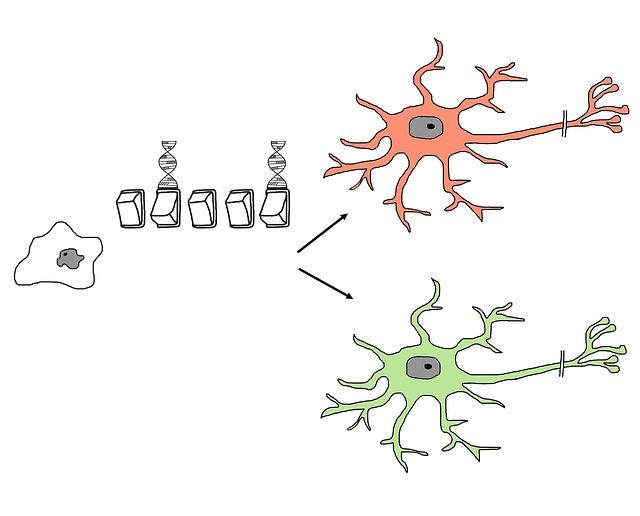How To Get Off Disability (And Back To Work)

Have you recovered from a disability? Do you miss earning your own income? Most importantly, are you excited to get back to work ASAP? Well, it’s understandable. Most people receiving Social Security Disability Insurance benefits (SSDI) look forward to returning to work life after a disability leave.
Resuming your pre-disability life, reconnecting with co-workers and continuing a professional career are all great goals but before jumping back into the workforce, you need to take care of a few things first, starting with getting off SSDI. Wondering, how? We’ll show you in this post. But, first, let’s get a better handle on Social Security Disability and its benefits…
WHAT IS SOCIAL SECURITY DISABILITY INSURANCE (SSDI)?
Social Security Disability Insurance (SSDI) is a federal insurance program introduced by the U.S. government and managed by the Social Security Administration. [source] Under this program, a monthly benefit pay plan is designed for individuals who are no longer capable of working.
People who qualify for this program must have an impairment or significant illness — either physical or psychological — that prevents the individual from doing a considerable amount of work for at least one year.
SSDI is valid for both temporary and permanent conditions. The type of benefits an individual should apply for depends on the type of condition an individual has. This program is a part of the Social Security plan that also provides retirement benefits to the majority of older Americans.
WHAT BENEFITS ARE YOU ELIGIBLE FOR UNDER SSDI?
The SSDI program offers a number of benefits to the disabled, including pay benefits, Medicare or Medicaid coverage, and reimbursement of expenses to accommodate your disability.
Unlike Supplemental Security Income (SSI), SSDI benefits don’t depend on the income level of the disabled person receiving it. [source] A legally and medically justified disabled person of any income level can supposedly receive benefits. [source]
That said, SSDI benefits are approved on the basis of disabled workers’ past earnings. These benefits are accessible by the disabled workers’ and to their dependent family members. To qualify, a disabled individual must have worked in jobs covered by Social Security. Also, they must secure a valid work credit.
A valid work credit means you must have worked enough for a certain number of years and have insured status for Social Security. For calculating valid work credit, two tests are used, including:
- Recent Work Test – This test requires you to have worked at least five out of the last 10 years and have earned enough work credits to qualify for benefits.
- Duration of Work Test – This test determines whether you have worked enough time to qualify for benefits. The time-span depends upon the claimant’s age. The higher the age, the longer you must have worked and paid into the Social Security fund to claim benefits.
After determining your work credit history, it’s decided whether you’re eligible to receive SSDI benefits.
HOW TO GET OFF DISABILITY BENEFITS
1. You Need a Medical Evaluation
When you’re disabled, you’re expected to undergo periodic evaluations and observations from time-to-time to confirm your eligibility to continue receiving SSDI benefits. Three parameters are used to assess medical improvement:
- Expected – Your condition will be analyzed within 6-18 months after your benefits start
- Possible – Your condition will be reviewed no sooner than three years
- Not expected – Your medical state will be reviewed no sooner than seven years
In case your condition improves before the reviewing period, it’s your responsibility to inform the Social Security Administration (SSA). Receiving disability benefits under false pretenses can raise red flags with Social Security, resulting in a huge setback to your career.
Now, when you decide to go back to work, both your physical and mental state will be evaluated at that time to ensure you’re ready to resume working.
Also, when you inform the SSA about wanting to start working again, you’ll be allotted a trial work period of 9 months. During this time, you’ll still retain your eligibility for SSDI benefits. In case you’re unable to carry on working due to the same disability, your SSDI benefits will continue and you’ll return to “disabled” status.
2. You Need to Complete the SSA Questionnaire
Apart from your medical evaluation, you’ll be asked to answer a series of questions to send to the SSA for final review to determine whether you’ll be able to do the work you did before. These are the main questions you’ll be asked to answer:
What Work Activities Are You Fit to Perform?
If you have a medical impairment(s) that affects your potential to work on a regular basis, but isn’t as severe as any condition described in the Social Security Administration’s listing of impairments, the SSA will assess your residual functional capacity (RFC). [source] RFC is a way to help determine what you can still do, despite being disabled. Once the SSA assesses your remaining functional capacity, they’ll look for certain factors, including:
- Your physical exertion at various work-related activities (e.g., standing, sitting, walking, carrying, lifting, pulling, pushing)
- The extent of your postural activities (e.g., reaching, handling large objects, using your fingers, feeling, stooping, balancing, climbing stairs or ladders, kneeling, crouching, crawling)
- Your tolerance to specific environmental conditions (e.g., wetness, extreme temperatures, noise, etc.)
- Your resistance to hazardous working conditions (e.g., dust, moving machinery or heights, fumes, odors, gases, vibrations, poor ventilation)
- Ability to see, hear and speak
- Concentration and focus at work
- Understanding, remembering, and following instructions
- Appropriately responding to supervisors, co-workers, and usual work situations
- Ability to adapt to changes in the work setting
What Were Your Job Responsibilities at Your Past Job?
The SSA will require the titles of all your past jobs. In addition, a description of the work you used to perform will also be required. Here’s a list of information the SSA will need:
- Your job responsibilities
- Days you worked
- Number of hours worked per week
- Pay you received while working
- Specific skills and knowledge your work required
- Machinery, tools, and equipment you used at work
- A share of your independent decision making
- The extent of supervision you required at work
- Amount of physical indulgence
- How much sitting, standing, walking, climbing, stooping, kneeling, crawling and balancing, your work required
- Hearing, speaking, and vision requirements of your job(s)
- How you used your hands, arms, and legs
- Environmental conditions of your place of work(s)
Each of these factors will help the SSA determine whether you’re fully able to return to work.
Will You Be Able to Perform Your Past Work?
The SSA gives special attention to the work requirements of your last job before you became disabled and compares them with their assessment of your remaining functional ability to do basic work activities.
The evaluation is also only limited to past work that’s considered relevant and (usually) has to meet the following criteria:
- Work performed in the last 10-15 years
- Work that involved important and productive physical or mental activities
- Work performed long enough to learn how to do the job
After making the comparison(s):
- If the SSA finds you can still do your past work as you had done, you’re no longer considered disabled
- If the SSA finds you’re physically and mentally able to do any of your past relevant work, the process of stopping SSDI benefits moves to the final step
What Happens If You’re Found Incapable of Doing Your Past Work?
If you can’t do the work you did in the past, the SSA will analyze to see if there’s any other work you could do despite your impairment(s). Your medical condition, level of education, former work experience, age, and any useful skills you have will be considered to this end.
If you’re unable to do any other work, the SSA will consider you disabled. If you can perform other work, the SSA will confirm that you don’t have a qualifying disability and that you’re ready to resume working.
CONCLUSION
Being able to get off disability is certainly an achievement, not to mention the joy of returning to your former life. But as exciting as it is, don’t forget you’re still in a recovery state and the transition will take time. So, it’s in your best interest to take care of yourself in the initial phase. Then you can get confirmation from SSDI and your healthcare team before rejoining the workforce.
ABOUT THE AUTHOR: This blog post is presented by Sharda Hospital. Sharda Hospital is one of the largest super specialty hospitals in Delhi National Capital Region (NCR).Facebook | Twitter







